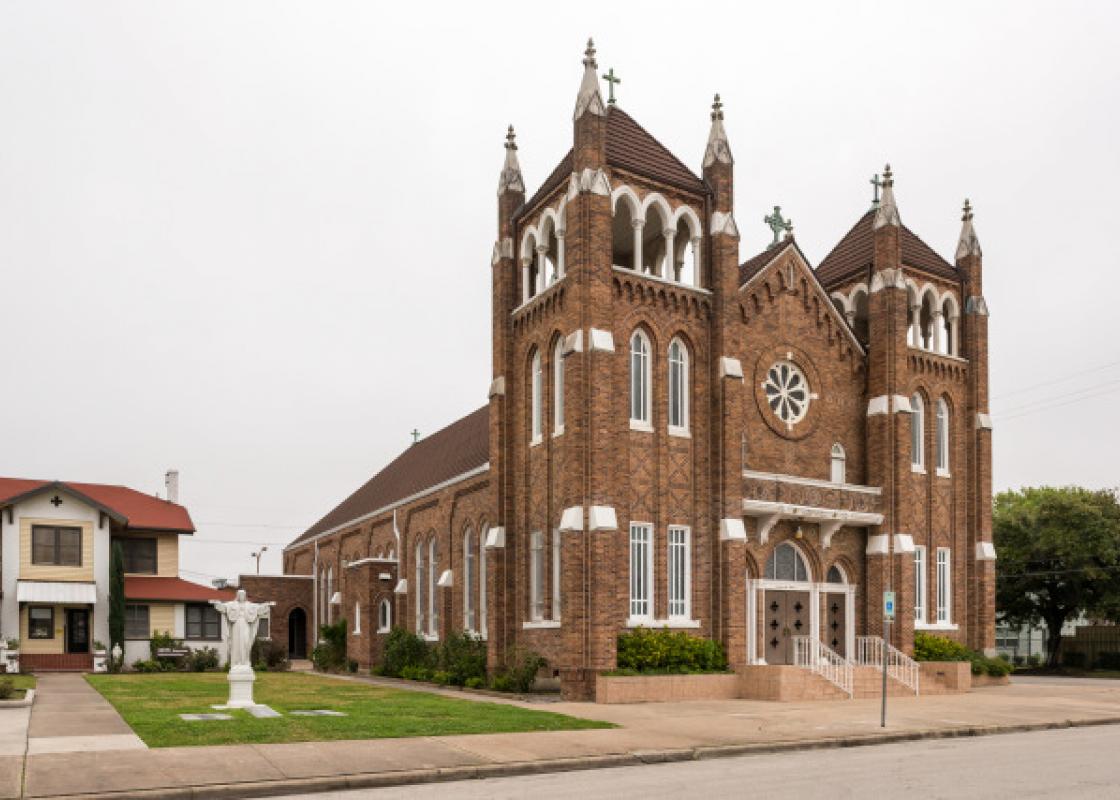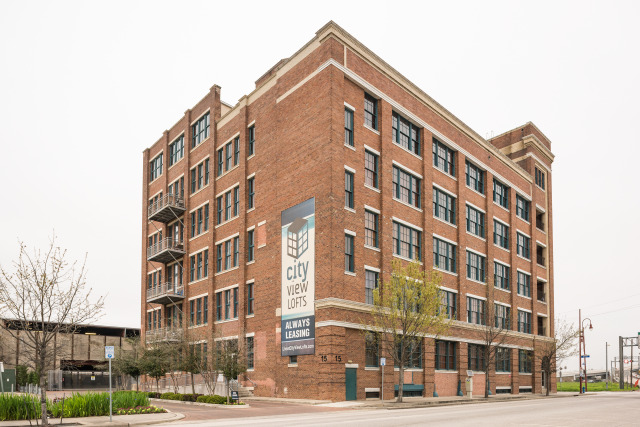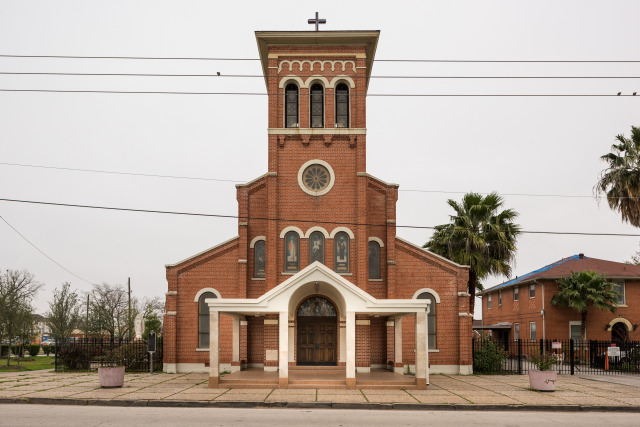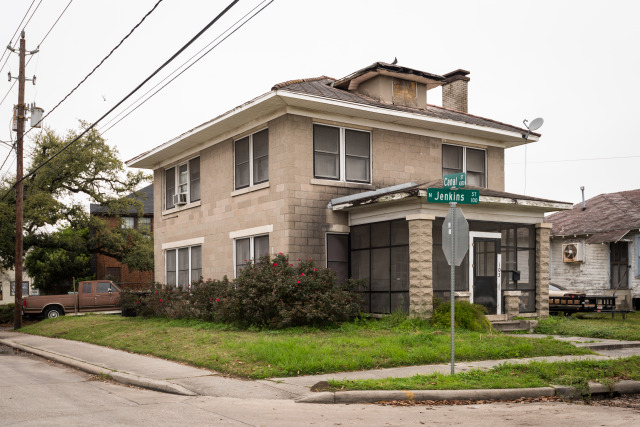This is the second in a series of 10 self-guided driving tours of Houston's original six wards, written by architectural historian Stephen Fox. Read Fox's tour of First Ward here. The tours are collected in a limited-edition zine, forWARDS, that was published in conjunction with RDA's 40th annual architecture tour. The zine, designed by Spindletop Design and illustrated with photography by Peter Molick, can be purchased for $15. Call 713-348-4876 or email rda at rice.edu.
Second Ward retains much more of its historic residential fabric than does First Ward. It extended almost all the way east to the Navigation-Lockwood intersection, the east city limit line of Houston in 1905.
From the Main-Congress intersection go one block north on Main, then turn right onto Franklin Avenue. The majestic First National Bank Building (now Franklin Lofts) at 201 Main (1905, 1909, Sanguinet & Staats) anchors this intersection. The bank continues along Franklin all the way to Fannin Street. At the Franklin-San Jacinto intersection is the modern Harris County Family Law Center (1115 Congress, 1969, Wilson, Morris, Crain & Anderson).
Turn left onto Chenevert, then left onto Commerce. From the Chenevert-Commerce intersection you see the imposing six-story National Biscuit Company Building (now City View Lofts) at 15 N. Chenevert (1910, A. G. Zimmerman). Commerce Street was the early twentieth-century Second Ward Wholesale District because the International & Great Northern Railroad freight line ran along Commerce Street; the 1600 block retains a collection of three-story brick warehouses, plus the modernistic Grocer’s Supply Company at 101 N. Jackson (1941, Joseph Finger). Turn left onto La Branch, then left onto Franklin.
Bear left onto Navigation and go down into the underpass beneath the Galveston, Houston & Henderson Railway tracks. Curve right onto Navigation Boulevard past Our Lady of Guadalupe Catholic Church at 2405 Navigation (1923, Leo M. J. Dielmann), one of Houston’s first Spanish-language parishes.
Turn left onto N. St. Charles past St. Vincent Catholic Cemetery then right onto Engelke Street. This is the Settegast First Addition and is notable for its narrow streets and wood cottages. Streets to the left ended near the bayou channel; this was the least desirable housing in nineteenth-century Houston.
Turn right on N. Palmer and proceed across Navigation to Canal Street. Turn right onto Canal. Until World War I, Canal Street was named German Street. The Canal Street Apartments at 2821 Canal (2005, Val Glitsch) is an award-winning affordable housing complex. The blocks of Canal between Live Oak Alley and Colby, mostly in the Lubbock Addition, contain a village of picturesque Victorian cottages interspersed with corner store buildings. The Casa Lobo (2014, CONTENT) at 205 N. St. Charles is located in this area. Turn left onto Colby, then left onto Commerce Street.
The tracks of the International & Great Northern Railroad still run down the middle of Commerce Street, which is why two- and three-story brick warehouses were built there in the early twentieth century. Today, three-story townhouse complexes indicate the radical transformation of what, historically, was a working-class immigrant neighborhood.
Turn right onto Paige Street, then curve onto Sherman Street in the Settegast Addition past the three-block-long Settegast Park. Turn left onto Palmer Street then right onto Commerce. Turn right on Roberts, then left onto Sherman. The pair of steel-framed, steel-paneled shed buildings located diagonally across the Sherman-Roberts intersection from each other were built by WKM in 1945 as machine shops for the production of valves for the oil industry.
Cross Sampson and York. Continue east on Sherman into the Brady Addition, platted by Sherman Brady on land his father acquired in the nineteenth century.
Blessed Sacrament Catholic Church at 4015 Sherman (1924, Frederick B. Gaenslen) occupies property donated by the Brady family. Turn left on Jenkins Street, then left onto Canal Street.
Note at 103 N. Jenkins and Canal that the two-story, Foursquare-style house on the corner is built of exposed concrete block. Turn right on N. Drennan. At 216 N. Drennan Street is the G. G. Blau Homestead, a classic Gulf Coast cottage located in the Blau Addition on what had been the Blau farm.
Turn left onto Navigation Boulevard. Turn right onto N. Hutcheson Street. Historian and preservationist Thomas McWhorter is restoring another exceptionally old house that predates the urbanization of the East End, the Joseph Merkel House at 416 N. Hutcheson (c. 1880), also a Gulf Coast cottage.













